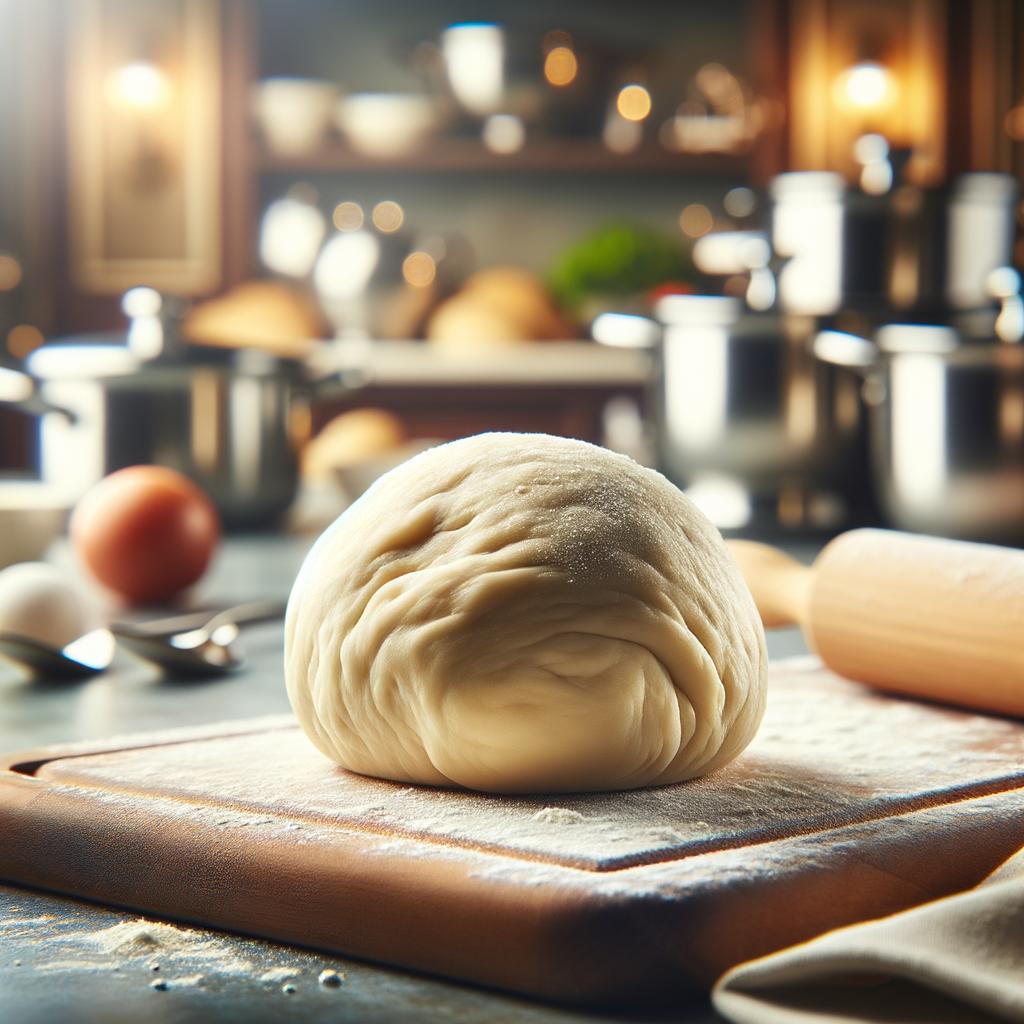for the Dough:

Description
Dough, the humble yet mighty foundation of countless global culinary treasures. Its appearance is a simple, pale mass, soft and pliable to the touch. Yet, within its simplicity lies a world of complexity. Depending on its composition, it can be elastic and stretchy, or crumbly and tender. The flavor profile of dough is subtly sweet and yeasty, a blank canvas ready to be transformed by the hands of the skilled cook into a delicious masterpiece. What sets dough apart from other ingredients is its versatility and transformative nature; it can morph into a myriad of shapes and forms, each carrying its own unique texture and taste.
Primary Uses
Dough is the heart of many culinary traditions. In Italian cuisine, it forms the base of pizzas and pastas, while in French cuisine, it gives birth to a plethora of breads and pastries. In the East, it's used to make dumplings, noodles, and flatbreads. Apart from its culinary uses, dough also holds a significant place in various cultural rituals and traditions, symbolizing sustenance and prosperity. For instance, during the Jewish holiday of Passover, unleavened dough is used to make Matzah as a remembrance of their ancestors' hasty flight from Egypt.
History
The history of dough is as old as civilization itself, dating back to the Neolithic era when our ancestors first began to grind grains into flour. It's believed that the first dough was likely a happy accident, a result of spilled water on ground grains that was then heated on a hot stone. Over the centuries, the art of dough making evolved, with the Egyptians being the first to discover the leavening process. The romantic tale of dough is intertwined with human evolution, each civilization adding their own unique twist to this versatile ingredient. It's a testament to our shared history, a symbol of human ingenuity and our endless pursuit of culinary excellence.
Nutritional Information
Dough's nutritional profile varies based on its ingredients, but most commonly, it's a good source of carbohydrates, providing the body with energy. Whole grain doughs are rich in dietary fiber, B-vitamins, and minerals such as iron and magnesium. However, it's important to consume dough-based foods in moderation as they can be high in calories and low in essential proteins and fats. Compared to its gluten-free counterparts, traditional dough is higher in protein but can cause issues for those with gluten intolerance or celiac disease. As a nutritionist, I always encourage exploring the vast world of dough, from traditional wheat-based to those made with ancient grains, each carrying their own unique nutritional benefits and flavor profiles.

